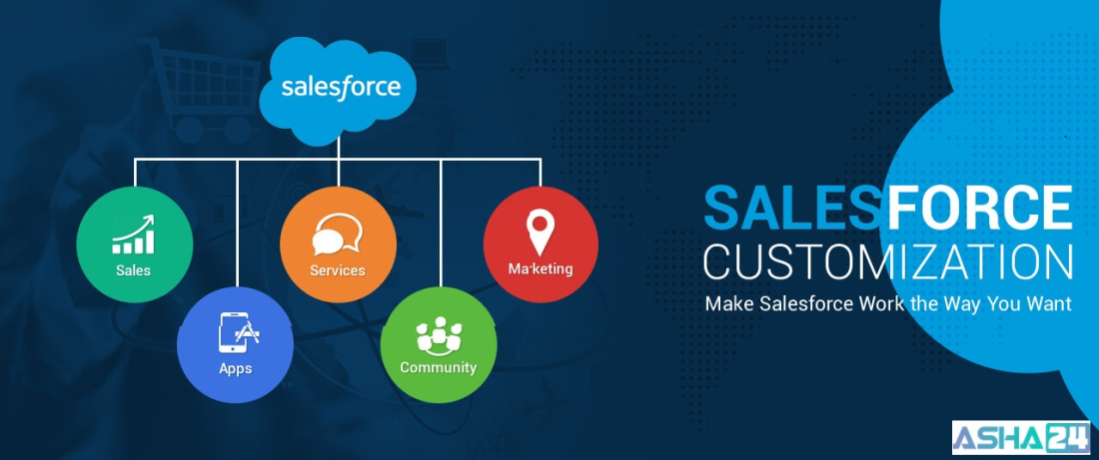Configuration and Customization in Salesforce – Tutorial
Configuration helps you use User Interface(UI) to easily develop applications in Salesforce whereas Customization enables you to write your own functionality (Visualforce pages & Apex).
Visualforce Pages:
Visualforce is markup language that permits to set User Interface components in salesforce. It’s a very attractive tool which operates on force.com platform. Overusing page layouts, you can efficiently configure User Interface.
Apex Programming:
It’s a completely object-oriented type, on-demand programming language. The syntax resembles Java and acts like reserved procedures.
Utilize this quick guide to the 3 main categories of Salesforce customization to understand whatever your customizing options are – and where to look when something you tried isn’t working.
• Configuration (or declarative),
• Integration (data), and
• Custom code.

Configuration:
There are many multiple ways to customize how Salesforce views and reacts to users – declarative work and custom code.
Declarative job concern to fixing up and working Salesforce’s original functionality or declarative development features. In another word, clicking the right boxes to switch characteristics on and off in the program.
Always remember “clicks not code” beginning, as Salesforce configuration needs blank programming. The declarative work doesn’t really affect your Salesforce dashboards.
It further recommends configuring the back-end system supplies. Despite, this can stay somewhat complicated. Estimating out whereby to balance Salesforce’s original settings correctly and most conveniently is one of that clear-to-learn-hard-to-master stuff.
Integration:
Different business applications in some field will support you to maintain various features of your business before performing Salesforce.
Moderately than producing a disorganized process that pushes your team to re-enter data, we can integrate Salesforce among these applications so, this data moves from one program to the other and your workflow doesn’t sustain.
The main business applications advance integration apps to Salesforce:-
• Customer Services.
• Administration & IT.
• Collaboration.
• Sales.
Custom Code:
If you’ve tired your declarative options and but require more from Salesforce, then it’s the opportunity to look at your custom code choices. The custom code contains coding for different modules inside the Salesforce framework.
Certain modules will be utilized for business logic, front-end components, or both. Applying APEX (Salesforce coding language), we can generate custom dashboards and custom roles within Salesforce, so as automatically modernizing fields, building records or executing calculations.

Naveen E
Author
Hola peeps! Meet an adventure maniac, seeking life in every moment, interacting and writing at Asha24.